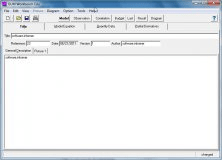In almost any piece of electronic equipment we see these days you’ll see just one or two ICs, often with hundreds of pins and only a handful of discrete components. Usually, the components are so small it’s difficult if not impossible to identify exactly what they are (resistor, capacitor, inductor, or what?).
It’s easy to imagine the control and precision needed to assemble these miniature PC boards. What about the design of the ICs themselves though – how do they design, prototype and test the circuits inside a 300-pin "mega-chip"? And how do they make sure the ICs will work in a real circuit before committing them to manufacture?
Bringing the design elements together in this way has less obvious advantages, too. For example, hardware engineers can work at a level of abstraction above the underlying logical elements, increasing the design speed.
Multisim includes all the tools necessary to take a design from inception to finished project.
The main aspect is that you can create a circuit design just as you would draw in paper. Just place the componets by selecting from the component selector and drag to the appropriate places. Now connect, and hit the RUN button.
Multisim has a database of the most commonly used components (more than 16,000 (in the Power-Pro edition) that can be placed and wired immediately. However, Multisim’s database is perhaps unique in that every component has a simulation model attached to it.
If a part that you want isn’t in the database, Multisim includes a Symbol Editor that allows you to create your own, either from scratch or based on an existing component (or "symbol").

The calculations follow the principles given in the DIN/ISO/BIPM Guidelines.
Comments (12)
failure rate, most of the ic's are missing pins, by there own admission they state not free of errors.
Facebook comments